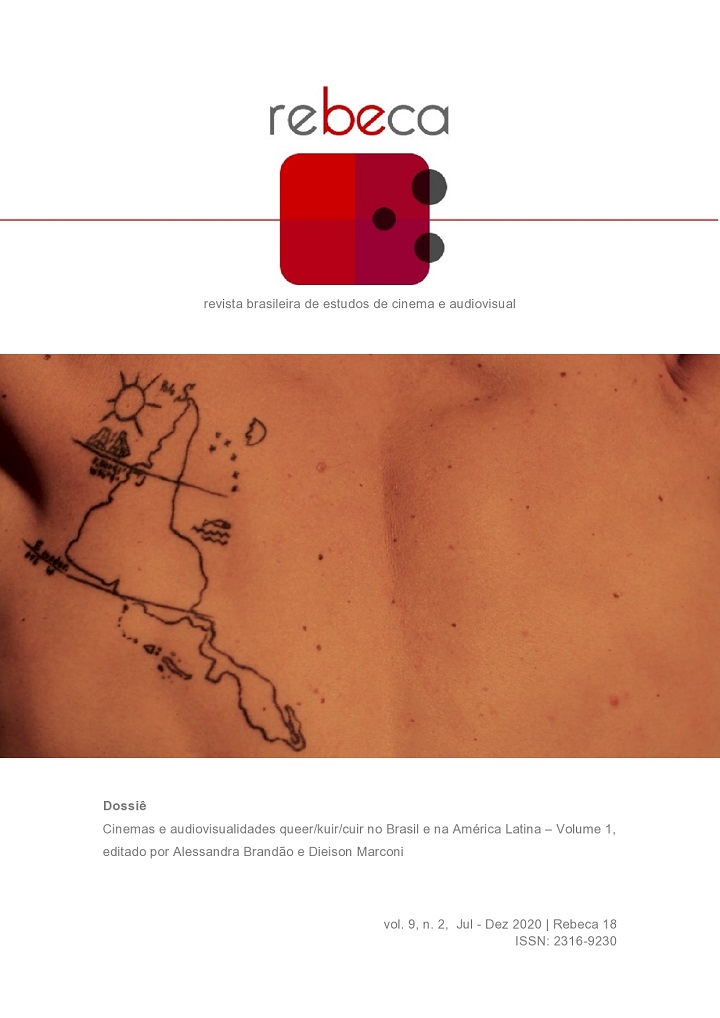Paulo Emílio e Os filmes na cidade (1966): a gênese da comédia musical
DOI:
https://doi.org/10.22475/rebeca.v9n2.661Keywords:
Paulo Emílio Sales Gomes, História do Cinema Brasileiro, Comédia Musical, Rio de Janeiro.Abstract
No presente artigo, analisaremos parte completamente desconhecida da trajetória intelectual de Paulo Emílio Sales Gomes: os manuscritos do curso Os filmes na cidade (1966), elo perdido entre as pesquisas históricas que realizou sobre o cinema brasileiro, antes e depois do golpe civil-militar (1964). Aqui, veremos apenas como Paulo Emílio investiga nas manifestações culturais e nas fisionomias femininas no Rio de Janeiro do século XIX a gênese das comédias musicais, tomadas como o gênero de maior expressividade de nossa fisionomia. Para tanto, Paulo Emílio se vale de relatos de viajantes estrangeiros como Carl Schlichthorst, Theodor von Leithold, Ludwig von Rango e John Lucook; e obras como Aparência do Rio de Janeiro. Notícia histórica e descritiva da cidade (1949), de Gastão Cruls, Corografia do Distrito Federal (1949), de Mario da Veiga Cabral, Machado de Assis: Estudo Crítico e Biográfico (1936), de Lúcia Miguel Pereira, Arthur Azevedo e sua época (1966), de R. Magalhães Jr. e Cavaquinho e Saxofone (1940), de Alcântara Machado. Remontando um mosaico de indicações de leitura e transcrições, veremos como a expressividade cultural da comédia musical é interpretada na perspectiva de uma história econômica, psicológica e social de longa duração, na qual persistirá no cinema aspectos do teatro, música, dança, ou ainda, das revistas, do erotismo e de fisionomias femininas que ambientam a cidade do Rio de Janeiro no século XIX.Downloads
Downloads
Published
Issue
Section
License
1. Authors retain the copyright and grant the journal the right of first publication, with the work simultaneously licensed under theCreative Commons Attribution License, which allows the sharing of work with acknowledgment of authorship and initial publication in this journal.
2. Authors are authorized to take additional contracts separately, for non-exclusive distribution of the version of the work published in this journal (e.g. publish in institutional repository or as a book chapter), with acknowledgment of authorship and initial publication in this journal.
This work is licensed under a Creative Commons Attribution-NonCommercial-ShareAlike 3.0 Unported License.
CC BY-NC-SA
This license allows others to remix, adapt, and create from your work for non-commercial purposes, provided they credit you and license new creations under identical terms.
You are free to:
● Share — copy and redistribute the material in any medium or format.
● Adapt — remix, transform, and build upon the material.
The licensor cannot revoke these freedoms as long as you follow the license terms:
● You must give appropriate credit, provide a link to the license, andindicate if changes were made. You may do so in any reasonable manner, but not in any way that suggests the licensor endorses you or your use.
● You may not use the material for commercial purposes.












